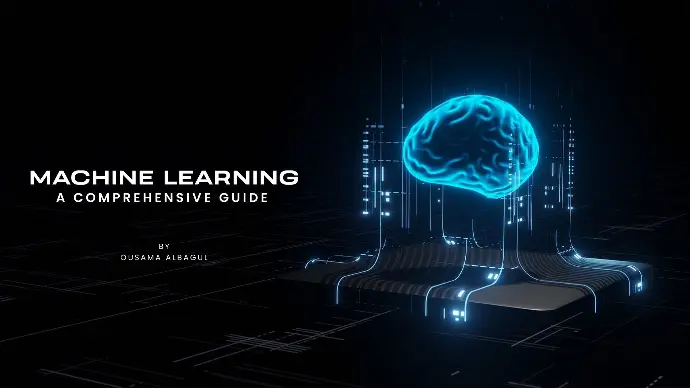Understanding Machine Learning: A Comprehensive Guide

Machine learning (ML) is a fascinating and rapidly evolving field within artificial intelligence (AI) that allows computers to learn from data and make decisions or predictions without being explicitly programmed to perform specific tasks. This guide will take you through the key concepts, mechanisms, and types of machine learning, and explain how it works in-depth.
What is Machine Learning?
Machine learning is a subset of AI that focuses on building systems that can learn from and make decisions based on data. Instead of following hard-coded rules, ML algorithms use statistical techniques to identify patterns and infer rules from data.
Key Components of Machine Learning
- Data: The foundation of machine learning. Data can be anything from numbers, text, images, or any measurable factor.
- Algorithms: Set of rules or instructions the machine follows to learn from data.
- Model: The output of a machine learning algorithm trained on data. It's used to make predictions or decisions.
- Training: The process of feeding data to the algorithm to learn and create a model.
- Prediction: Using the trained model to infer or predict outcomes on new data.
How Machine Learning Works
Machine learning involves several steps, typically following this workflow:
1. Data Collection
Data is gathered from various sources to form a dataset. The quality and quantity of data significantly impact the performance of the machine learning model.
2. Data Preprocessing
Data often needs to be cleaned and transformed before use. This step includes handling missing values, normalizing or scaling features, and encoding categorical variables.
3. Splitting the Dataset
The dataset is divided into training and testing sets. The training set is used to train the model, while the testing set evaluates its performance.
4. Choosing a Model
Selecting an appropriate machine learning algorithm based on the problem type (classification, regression, clustering, etc.).
5. Training the Model
The algorithm learns from the training data by adjusting its parameters to minimize errors. This process involves optimization techniques like gradient descent.
6. Evaluating the Model
The model's performance is evaluated using the testing set. Common metrics include accuracy, precision, recall, and F1-score for classification tasks, and mean squared error for regression tasks.
7. Hyperparameter Tuning
Adjusting the algorithm's hyperparameters to improve model performance. Techniques like cross-validation help in this process.
8. Making Predictions
Once trained and evaluated, the model can make predictions on new, unseen data.
Types of Machine Learning
1. Supervised Learning
The algorithm is trained on a labeled dataset, meaning each training example is paired with an output label. The goal is to learn a mapping from inputs to outputs.
- Examples:
- Classification: Predicting categorical labels, such as spam detection in emails.
- Regression: Predicting continuous values, such as house prices.
2. Unsupervised Learning
The algorithm is trained on an unlabeled dataset, meaning there are no output labels. The goal is to find hidden patterns or intrinsic structures in the input data.
- Examples:
- Clustering: Grouping similar data points together, such as customer segmentation.
- Dimensionality Reduction: Reducing the number of features while retaining essential information, such as Principal Component Analysis (PCA).
3. Semi-Supervised Learning
Combines a small amount of labeled data with a large amount of unlabeled data during training. This approach can improve learning accuracy when acquiring labeled data is costly or time-consuming.
4. Reinforcement Learning
The algorithm learns by interacting with an environment, receiving feedback in terms of rewards or punishments. The goal is to learn a policy that maximizes cumulative rewards over time.
- Example: Teaching an AI agent to play a game like chess or Go.
Real-World Applications of Machine Learning
1. Healthcare
- Disease Prediction and Diagnosis: Using patient data to predict diseases like cancer or diabetes.
- Personalized Treatment: Tailoring treatment plans based on patient data and genetic information.
2. Finance
- Fraud Detection: Identifying fraudulent transactions using patterns in transaction data.
- Algorithmic Trading: Making stock trading decisions based on predictive models.
3. Retail
- Recommendation Systems: Suggesting products to customers based on their browsing and purchase history.
- Inventory Management: Predicting demand to optimize stock levels.
4. Autonomous Vehicles
- Self-Driving Cars: Using sensors and ML algorithms to navigate and make driving decisions.
5. Natural Language Processing (NLP)
- Language Translation: Translating text between languages.
- Sentiment Analysis: Analyzing customer reviews to determine sentiment.
Challenges and Future Directions
1. Data Quality
High-quality, relevant data is crucial for effective machine learning. Poor data quality can lead to inaccurate models.
2. Interpretability
Understanding how models make decisions is essential, especially in critical applications like healthcare and finance.
3. Scalability
As data volumes grow, developing scalable machine learning solutions becomes increasingly important.
4. Ethics and Bias
Ensuring that ML models are fair and unbiased is a significant concern. Biased data can lead to discriminatory outcomes.
5. Continual Learning
Developing models that can learn and adapt over time, rather than requiring retraining from scratch with new data.
Conclusion
Machine learning is transforming how we interact with technology, offering innovative solutions across various domains. By understanding its principles, mechanisms, and applications, we can better appreciate its potential and navigate the challenges it presents. As the field continues to evolve, staying informed and adaptable will be key to harnessing its full power.